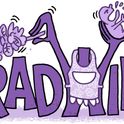Some years ago the British Journal of Psychiatry reported the case of a man who believed he had an extra head. It was an objectionable, hectoring presence that plagued him with abuse until, one day, he blew it away with a revolver. Unfortunately, the gun wasn't seeing double. The face at the end of the barrel was his own.
I was working with psychotic patients at the time, and I particularly enjoyed my conversations with one of my patients, Ron, who would discourse at length on politics, art and science, and who gave cogent accounts of his brilliant, but curtailed, academic career. And then he would flip. He entered a parallel, paranoid universe; an alternative history in which he had served as Princess Anne's bodyguard, but was now being persecuted by agents of the royal family. Why? Because he had betrayed a terrible secret: the princess had given birth to Siamese twin daughters and hidden them away. One of the brightest people I ever met, Ron was also the most resolutely insane. He refused medication, preferring to meet his madness head on, and had reached an accommodation with the voices. For the most part, they were just a semi-coherent mumbling, inches above and to the right of his head. "About there," he said, circling the empty space with his cigarette. Querying the veracity of the Princess Anne story was pointless. He became angry under challenge, but he acknowledged the voices as an aberration. There was a neurological explanation. His theory was that part of his brain had become functionally detached from the rest and was now semi-autonomous, issuing statements and streams of thought that sometimes mingled with the main flow, and sometimes just bubbled along in parallel. "I'm neuronally possessed," he said. It was a creepy thought.
One body one brain, one brain one mind, one mind one self. That's the convention. It is disturbing when nature and medical science challenge the prevailing view. I thought of Ron when I heard about Ladan and Laleh Bijani, the Iranian conjoined twins, and the ill-fated surgical efforts to separate them. The pictures were riveting. I saw two smiling heads in a single hood, tilted together as if posing affectionately for a photograph; I imagined the shared cranial cavity stuffed with misshapen brain. The images triggered an uncomfortable oscillation in the circuits of my own brain: one person, or two? It was my problem, not theirs. In their minds they were clearly differentiated. Extrovert Ladan the aspiring lawyer; soft-spoken Laleh, the would-be journalist. But then they were joined only at the skull. Their brains, though tightly packed and sharing certain vascular features, were anatomically distinct. For other conjoined twins the picture is less clear. There are rare cases in which areas of brain are fused. One report describes a pair with a single cerebrum and two brainstems converging at the midbrain: in effect, a single brain regulating the behaviour of two partially differentiated bodies. Then there are the extremely rare cases of "dicephalic parapagus" (one trunk, two heads) and "diprosopic parapagus" (one trunk, one head, two faces).
Is it possible in such cases to determine the number of persons present? Philosophers delineate various conditions of personhood, among them: humanity (membership of the human race), identity (psychological continuity over time), and individuation (factors distinguishing one person from another). Conjoined twins clearly meet the first two conditions but create confusion over the third. If bodily functions and/or brain activity are to some extent shared then, arguably, the individuation of conjoined twins is only partial. There is neither one person nor two.
The Bijani twins' nervous systems and internal organs were distinct. They did not share heartbeats or pangs of hunger, or surges of adrenaline in the middle of a nightmare. And they did not share nightmares. Laleh and Ladan yearned for separation. This is not always the case. Mary and Margaret Gibb, who were joined at the buttock, refused separation even when Margaret developed cancer. They died within minutes of each other. Chang and Eng, the "original" Siamese twins, might well have been separated. They were joined at the chest only by a thick ligament. Today the operation would be relatively straightforward, but their 19th-century surgeons had doubts and the twins didn't press. Instead they went on to lucrative careers in the circus with PT Barnum, and eventually settled as farmers. They married sisters and, between them, fathered 21 children.
I examine the famous painting of Chang and Eng, dapper in their dinner suits, arms around shoulder and waist like drinking pals. Then I come across a modern photograph, something altogether more disturbing. Abigail and Brittany Hensel are lively, pretty girls just entering their teens. They differ in temperament and tastes and have been described as "defiantly independent." I stare at the photograph. Two heads perched upon a single body. It is the most unsettling image I have ever seen. And what do I feel? Revulsion? Fear? Bewilderment? Compassion? All of these, but none of them precisely. The picture is conveying something about the fact of being human that I can't quite fathom. My problem, not theirs.











